
Castanea sativa, the sweet chestnut, Spanish chestnut or just chestnut, is a species of tree in the family Fagaceae, native to Southern Europe and Asia Minor, and widely cultivated throughout the temperate world. A substantial, long-lived deciduous tree, it produces an edible seed, the chestnut, which has been used in cooking since ancient times.

The chestnut teal is a dabbling duck found in Australia. It is protected under the National Parks and Wildlife Act 1974.

Chrysolepis is a small genus of plants in the family Fagaceae, endemic to the western United States. Its two species have the common name chinquapin. The genus occurs from western Washington south to the Transverse Ranges in Southern California, and east into Nevada.

Castanopsis, commonly called chinquapin or chinkapin, is a genus of evergreen trees belonging to the beech family, Fagaceae. The genus contains about 120 species, which are today restricted to tropical and subtropical eastern Asia. A total of 58 species are native to China, with 30 endemic; the other species occur further south, through Indochina to Indonesia, mountainous areas of Taiwan, and also in Japan. The English name chinkapin is shared with other related plants, including the golden chinkapins of the Pacific United States, which are sometimes included within Castanopsis but are more often considered a separate but very closely related genus, Chrysolepis.

Frailea is a genus of globular to short cylindrical cacti native to Brazil. These species are cleistogamous. They were first classified in the genus Echinocactus.
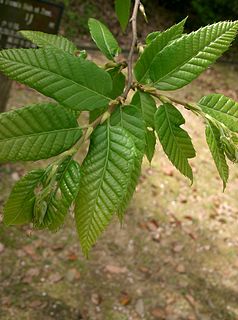
Castanea crenata, known as Korean chestnut, Korean castanea, and Japanese chestnut, is a species of chestnut native to Japan and Korea. Castanea crenata exhibits resistance to Phytophthora cinnamomi, the fungal pathogen that causes ink disease in several Castanea species. The mechanism of resistance of Castanea crenata to Phytophthora cinnamomi may derive from its expression of the Cast_Gnk2-like gene.

Castanea pumila, commonly known as the Allegheny chinquapin, American chinquapin or dwarf chestnut, is a species of chestnut native to the southeastern United States. The native range is from Maryland and extreme southern New Jersey and southeast Pennsylvania south to central Florida, west to eastern Texas, and north to southern Missouri and Kentucky. The plant's habitat is dry sandy and rocky uplands and ridges mixed with oak and hickory to 1000 m elevation. It grows best on well-drained soils in full sun or partial shade.

Castanea mollissima, also known as the Chinese chestnut, is a member of the family Fagaceae, and a species of chestnut native to China, Taiwan, and Korea.

The chestnut short-tailed bat is a bat species from South and Central America. The species is often confused with the Benkeith's short-tailed bat. It is a mainly frugivorous species that has been known to consume insects. To determine which pipers to forage on, it focuses on oder and then after proceeds to echolocate to determine position. It hunts between nightfall and midnight. Habitats include hollow trees, caves, cracks, abandoned mines, sewers, and house roofs. It does not decrease activity during full moons, only instances of turbulent weather like heavy rain. In an agricultural setting it has a higher resistance to habitat fragmentation compared to similar bat species.
"Litoria" castanea, also known as the yellow-spotted tree frog, New England swamp frog, tablelands bell frog or yellow-spotted bell frog is a species of frog in the family Pelodryadidae. It is a critically endangered species of frog that is endemic to southeastern Australia. Its natural habitats are temperate grassland, rivers, intermittent rivers, swamps, freshwater lakes, intermittent freshwater lakes, freshwater marshes, intermittent freshwater marshes, and ponds.

Pammene fasciana, the chestnut leafroller, is a moth of the family Tortricidae. It is found in Europe and across the Palearctic.

Myopopone castanea is a species of ant in the genus Myopopone. It was described by Smith in 1860.

Frailea cataphracta is a species of Frailea from Paraguay.
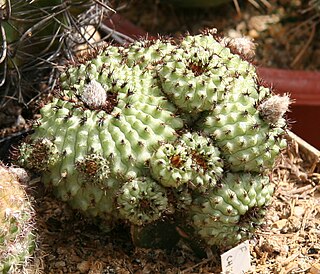
Frailea chiquitana is a species of Frailea from Bolivia.

Frailea curvispina is a species of Frailea from Brazil.
Frailea gracillima is a species of Frailea from Brazil, Paraguay, and Uruguay.
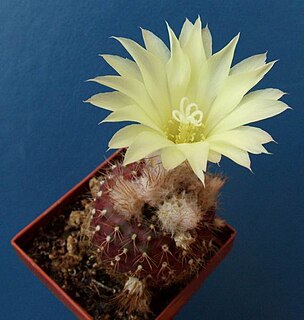
Frailea mammifera is a species of Frailea from Bolivia and Argentina.
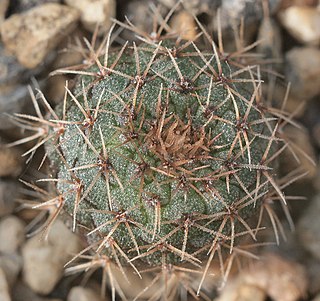
Frailea phaeodisca is a species of Frailea from Brazil and Uruguay.
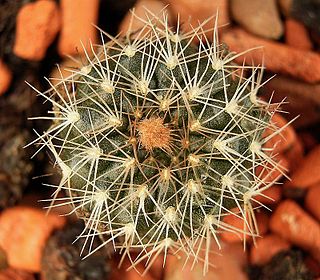
Frailea pygmaea is a species of Frailea from Bolivia, Argentina, and Uruguay.
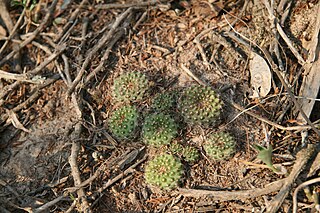
Frailea schilinzkyana is a species of Frailea from Brazil to Argentina.





















